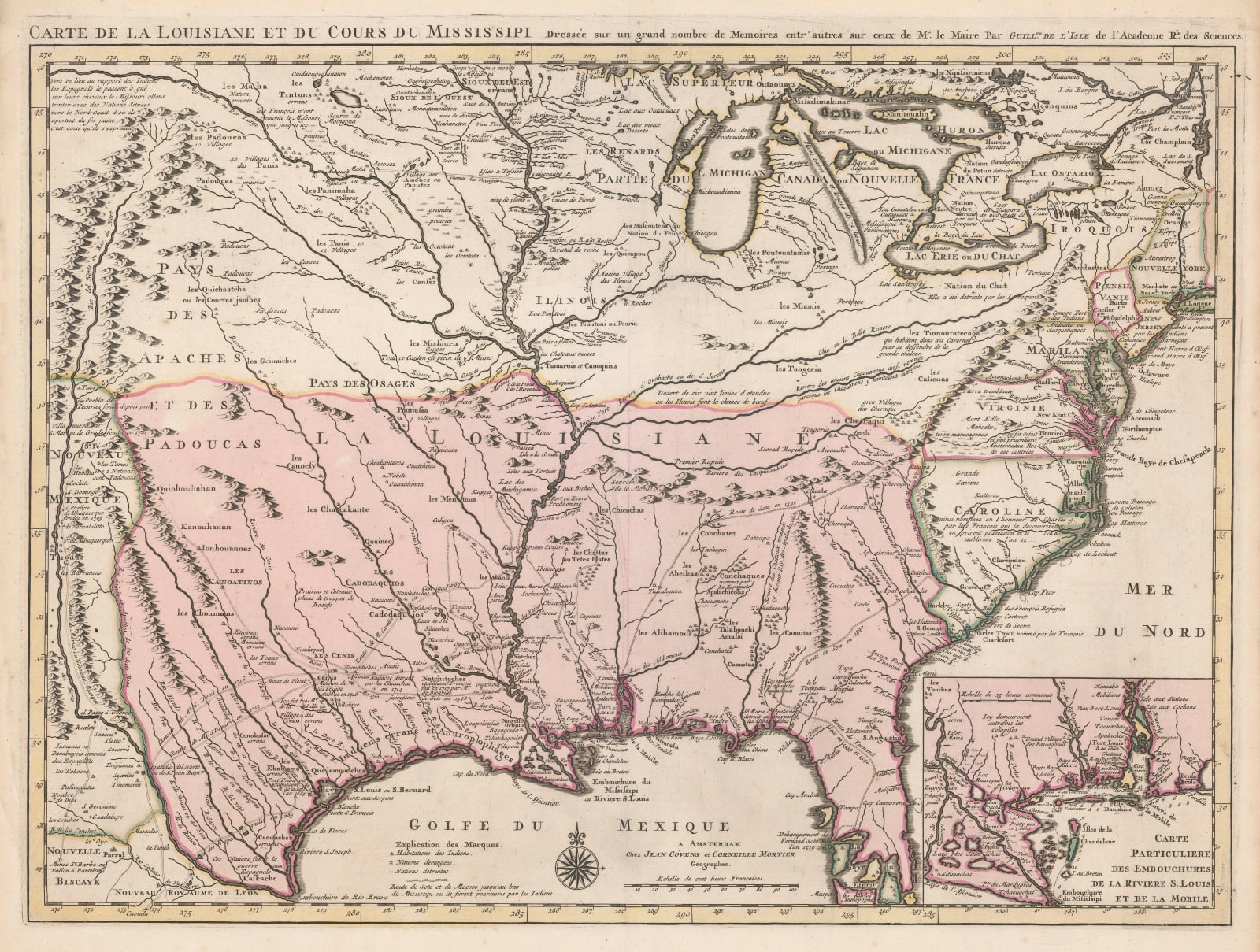Covens (Jean) & Mortier (Cornelius)
43 x 58 cm
The geographical focus of this map is the Mississippi Valley and upon its first widely distributed issue in 1718, it re-defined the geographical knowledge of the interior of the United States. De L’Isle had access to both the archives of the Jesuits and the accounts of important French expedition sponsored by the government and by the “Compagnie d’Occident”. Among the former, special mention must be made of the Jesuit missionary Francois Le Maire, who published his “Memoire” in 1717 and who produced two maps of the same region, heavily referenced by de L’Isle. The map also marks several routes of important French and Spanish explorers including de Soto in the mid 16th century and St. Denis and Tonty in the early 18th century, suggesting de L’Isle had access to the accounts of their expeditions.
Geographically, the map stretches from the Rio Grande in the west to Long Island in the east and from the Great Lakes in the north to the coast of the Gulf of Mexico in the south. The eastern part of the map has been criticized for its lack of accuracy but its inclusion was more for political reasons as opposed to geographical. It became the most accurate rendition of the Mississippi River; it also bears the credit for being the first map to show the name “Texas” on a map. Just below the town of “Cenis” on the Trinity River is a reference to a mission established in 1716 entitled "Mision de los Teijas”.
Possibly just as important as its geographical impact was the political implication depicted by its borders and nomenclature. The eastern English colonies are unceremoniously shunted to a narrow strip of coastal land while the French possessions in Canada are seamlessly joined to the northern border of Louisiana. The Spanish territories are not shown but confined to the west of the Rio Grande. Thus, in one cartographic work, France has claimed the vast majority of the interior of North America known at the time.
English response to this new map was immediate. Initially led by Hermann Moll, who produced a large map which exaggerated French possessions even further, stating on the map he was using de L’Isle’s map as a source and invited educated individuals to purchase his map so that they could inspect, discuss and comment on these new French claims. Slily he even advertises examples of de L’Isle’s original map which can be purchased at his establishment.
The map's influence was vast. Later French map makers delighted in producing revised or updated maps of the same region but essentially on the same political model. The map was widely used by German map makers such as Homann and Weigel and Covens and Mortier, the pre-eminent Dutch publishers of the period produced the same map with just their imprint added to the lower centre. This continued use and wide distribution ensured a simmering “cartographic war” between English and French map makers which culminated in the French India War in North America, part of the much large conflict, the Seven Years War 1756-1763.
The example offered here is the Dutch edition with unusual original full wash colour showing the borders of Louisiana.
[USA9648]


